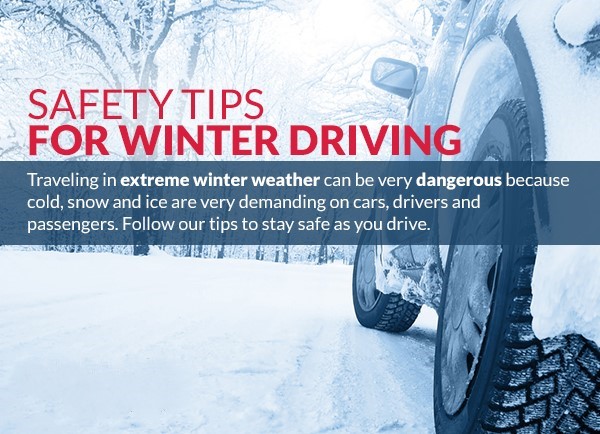
Winter Driving: Accidents Happen
The first snowfall can be a shock to the system for many Edmontonians. Winter inevitably catches us by surprise even though we expect it around this time of year. Drivers must adjust their habits overnight and prepare for longer commutes and poor weather conditions for the next several months. Whether we are unprepared or in denial about it, the winter driving season is here.
Drivers must adjust their habits overnight and prepare for longer commutes in poor weather conditions. Of course, the snow and ice also come with an increased risk of getting into an accident, even for experienced winter drivers.
Be Prepared
Being prepared is important when it comes to winter driving. Winterizing your vehicle is one of the ways drivers can decrease the chances of getting into an accident. This includes opting for winter tires seasonally, as well as changing out regular washer fluid for antifreeze, and carrying a reliable snow brush with an ice scraper.
Maintaining the ability to see and be seen can go a long way in dark or snowy conditions. Before driving away, clear the snow and ice from your front and rear windshield, as well as the side windows and mirrors. Ensure your headlights, taillights, and license plate are also clean, and that your windshield wipers are in good condition. Maintaining the air pressure in your tires and checking them whenever you fuel up can help prevent them from going flat in freezing conditions.
Carrying an emergency roadside kit with booster cables, as well as extra gloves, a blanket, or coat, and keeping your vehicle topped up with fuel can also help if you have an accident or become stranded. Keep an extension cord on hand and plug your vehicle in overnight if temperatures dip below -15. A small snow shovel, and sand or kitty litter can also come in handy if you end up stuck in a snowbank.
Don’t Overlook Driving Conditions
While planning ahead is important, adjusting your driving to suit the weather conditions is critical when it comes to winter driving and keeping yourself as well as other motorists safe. Check the forecast the night before to see whether you will need extra time for your morning commute. Plan your route and leave early. Slow down in traffic and increase your following distance from other vehicles, especially when approaching intersections or going over bridges. These areas can often be icy, even if the rest of the road is not.
It goes without saying to be alert and avoid distractions, but this is especially the case with winter driving. Beware of approaching stale green lights that may turn yellow. Avoid making sudden moves or last-minute lane changes. Turn your signal light on well in advance to give other drivers extra reaction time. Remember that semi trucks and buses have large blind spots and require greater stopping distance, so be especially cautious when driving around these vehicles, and never cut them off.
Edmonton Snow Clearing Policy
Winter Accidents
If you are involved in an accident this winter, the first thing to do is establish if anyone is hurt. These are the same steps for in Edmonton, and anywhere in Alberta. If anyone in your car or the other vehicle needs immediate medical attention, call EMS and the police. The police will respond if someone needs to go to the hospital, or if there is an uninsured or impaired driver involved. However, if they do not attend the scene, you must report the accident at a Collision Reporting Center. Contact your Edmonton personal injury lawyer to book an appointment with Moustarah & Company as soon as possible.
Stay warm and visible while you assess the damage to your vehicle and take photos, including of the scene of the accident. Collect any witnesses contact details, as well as the other driver’s insurance policy and vehicle information. Move your vehicle off the road if possible. If you cannot drive your vehicle away safely, call for help.
If you must wait for a tow-truck or ride, ideally seek shelter inside someplace nearby. If there is nowhere around, wait inside your running vehicle with your hazard lights on. It is not a good idea to stand outside or work on your vehicle while you wait, just in case another collision happens. Afterwards, report the accident to your insurance company. See a doctor as soon as possible to assess your injuries. Monitor your symptoms and follow through with their medical advice, including any treatment recommendations.
Emergency vehicles
There are rules in Edmonton, and across Alberta, regarding moving out of the way for emergency vehicles. Learn the rules of the road as they relate to emergency vehicles.

